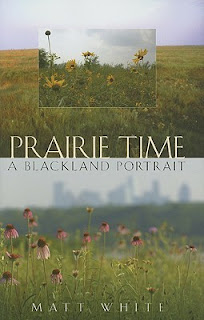Prairie Time: A Blackland Portrait
by Matt White
Phenomenal book--but of course, so sad--about the vanished prairies of north-east Texas. He goes in search of them and finds remnants of the unplowed land in railroad easements and sometimes in prairies preserved by the people who owned them. or by neglect.
When a virgin tallgrass prairie is plowed it never returns to its former plant communities. Or maybe never is too harsh a word...some restorations have come close to what we think may be the original state. Lacking fire and buffalo to regenerate the native plants, prairies were quickly grown up in cedar and scrubby hackberry or elm. I've seen that myself on the Corp of Engineers field that adjoins the Trinity River behind my house. The former owner of the nearby field kept the Corp. land mowed, but it hasn't been mowed in twenty years and the little trees are creeping in from all sides. It'll be a forest when we leave.
Our own pen area is suffering the same fate, but I'm determined to reverse it. Never, however, will I succeed in restoring it to the Blackland Prairie that it once was. We have only Johnsongrass, Bermuda and Dallis Grass imported from Asia and beyond. There are no coneflowers, sunflowers, or other native beauties to adorn the fields in summer.
The prairies he describes were dominated by Big and Little Bluestem, Indiangrass and Switchgrass. I suspect I've seen them all but I can't find them in my fields. But he writes this,
Perhaps, then,, there was something unique about our pioneer ancestors who refused to chop down every tree, who refused to plow under every blade of grass. What impulses motivated some people to preserve the world around them in an era when doing so was terribly out of fashion? What traits did they possess that caused them to see the world as something that could be used without being completely destroyed?
It's a question, and he still seeks to answer it. But it may be unanswerable.

No comments:
Post a Comment